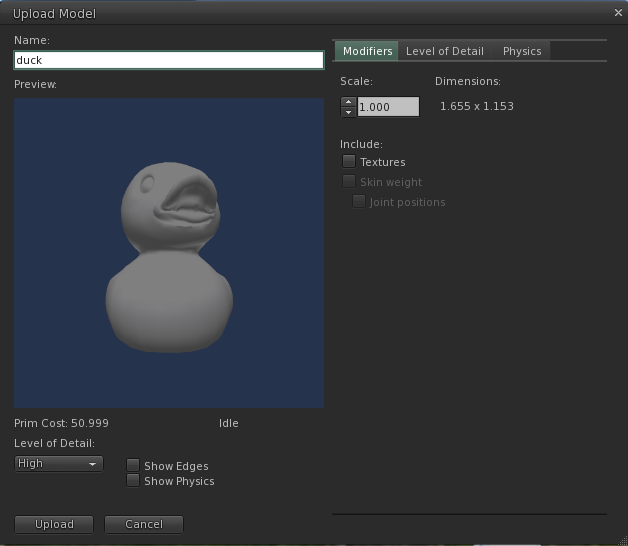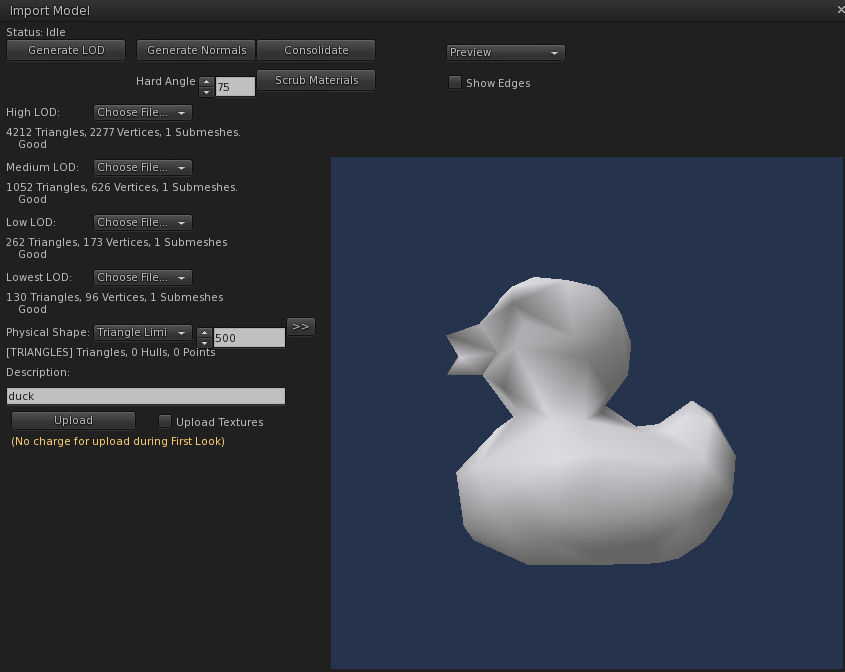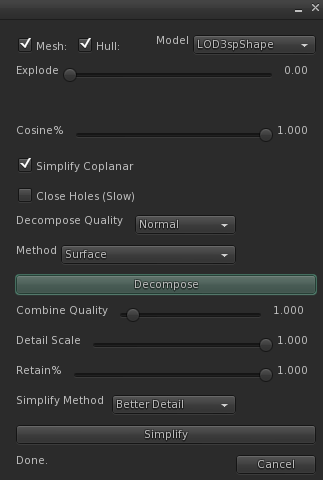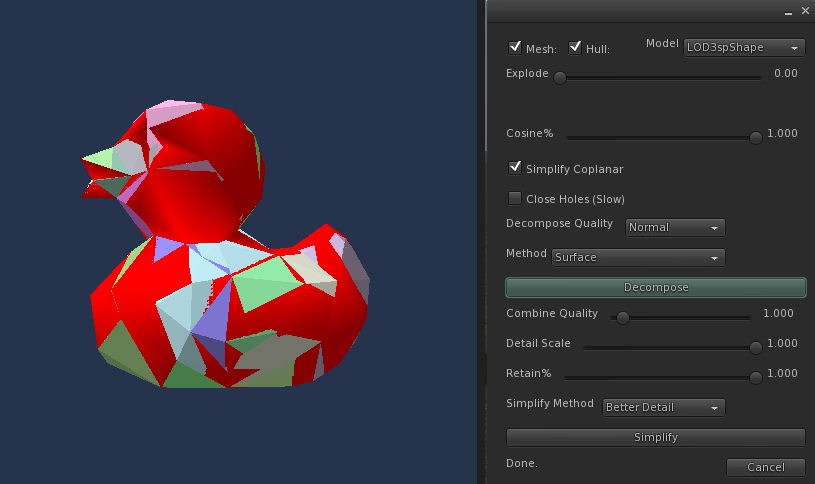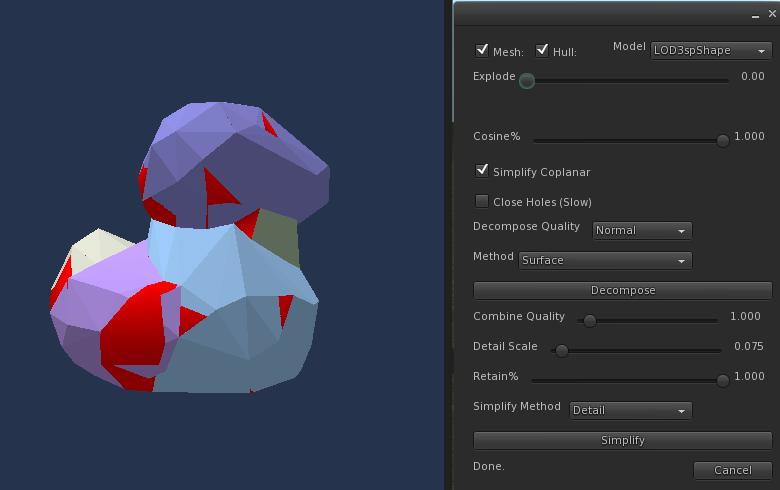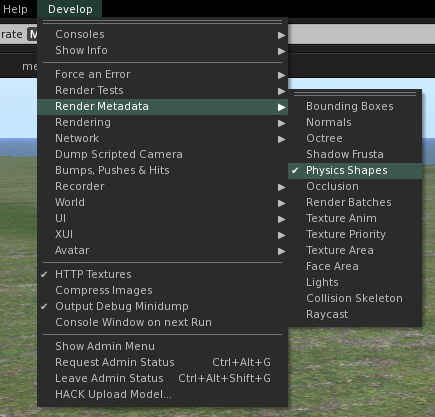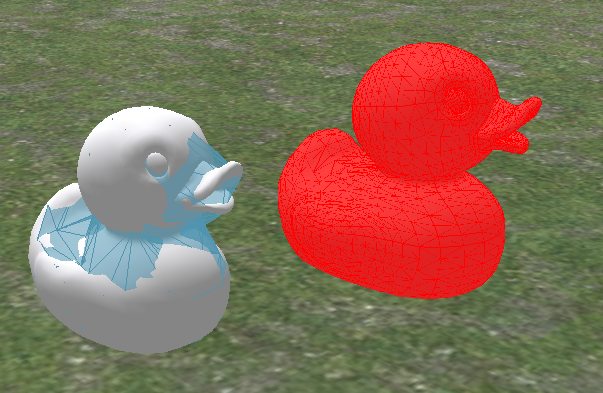Difference between revisions of "Mesh/Decomposing a mesh for physics shape"
< Mesh
Jump to navigation
Jump to search
Dan Linden (talk | contribs) m |
|||
| Line 1: | Line 1: | ||
__NOTOC__ | |||
[[Image:MeshWalkthrough-Decomposing Physics-Splash.png|300px]] | |||
* Now we're going to make the physical shape that can be bumped into. The model that you see and the model that you bump into can be defined by different meshes. If the physical shape is extremely detailed, the simulator will slow down when the model collides with objects or avatars. We're ideally looking to make a physical shape that is only detailed enough to give the illusion that you are bumping into the shape that you see. | * Now we're going to make the physical shape that can be bumped into. The model that you see and the model that you bump into can be defined by different meshes. If the physical shape is extremely detailed, the simulator will slow down when the model collides with objects or avatars. We're ideally looking to make a physical shape that is only detailed enough to give the illusion that you are bumping into the shape that you see. | ||
* Download duck.dae from | * Download duck.dae from | ||
Revision as of 12:13, 8 October 2010
- Now we're going to make the physical shape that can be bumped into. The model that you see and the model that you bump into can be defined by different meshes. If the physical shape is extremely detailed, the simulator will slow down when the model collides with objects or avatars. We're ideally looking to make a physical shape that is only detailed enough to give the illusion that you are bumping into the shape that you see.
- Download duck.dae from
https://collada.org/owl/download.php?sess=0&parent=126&expand=1&order=name&curview=0&binary=1&id=698
- Open the Build menu, choose Upload, click 'Model...'
- Alternately, open the Inventory, click the + menu button and Upload > "Model"
- A file dialog box will open
- Pick the COLLADA file you downloaded from your computer.
- The Import Model window will appear.
- Click the 'Generate LOD' button at the top of this window.
- The viewer will take a few seconds to process this
- Click the drop down next to Physical Shape, choose Triangle Limit.
- Type 500 into the text field and hit Enter (You can choose a different number. 500 still makes a good approximation of the duck shape. Using a very large number will cause the next steps to take longer to process)
- The duck will appear in the preview window
- Click the >> button next to Physical Shape to open the Physics
Decomposition tool window.
- In the Physics Decomposition tool window set Decompose Quality = Normal
- Set Method = Surface
- Click the Decompose button.
- The viewer will take a few seconds to process
- Slide the Explode slider to see the Decomposed shape. (The explode slider does not change the Decomposed shape, it only moves it away from the Mesh visually so you can see it clearly.)
- Slide the Detail Scale to 0.075
- Set Simplify Method = Detail
- Click Simplify
- The Decomposed pieces are simplified into a few objects.
- Click the Upload button to upload the mesh with this simplified Physics Shape.
- Rez the Model
- Enable the Develop menu with ctrl-alt-q
- Enable Develop menu > Render Metadata > Physics Shapes
- Objects will display a color overlay. A blue overlay indicates the
object's physics are efficient and will produce very little load on the sim. A red overlay indicates the object could potentially cause high physics lag on the region.

